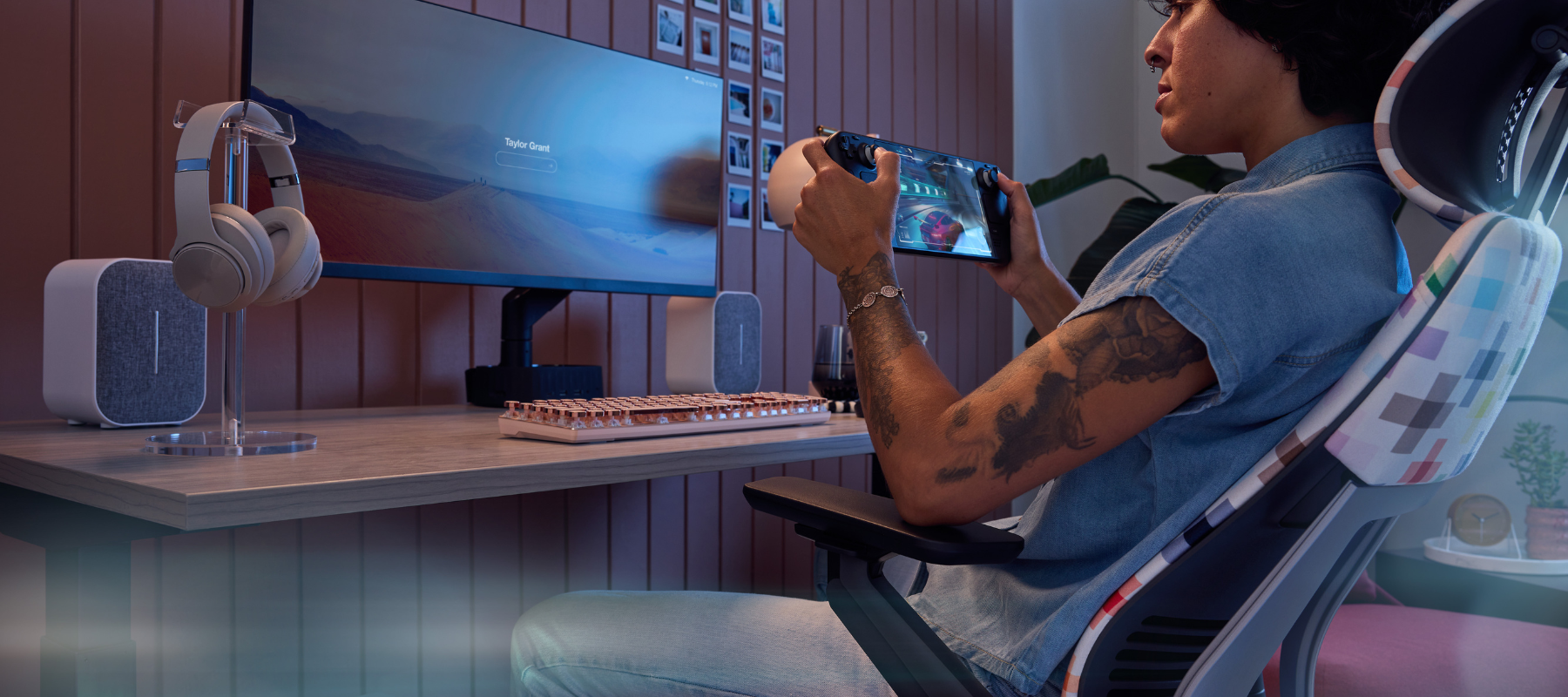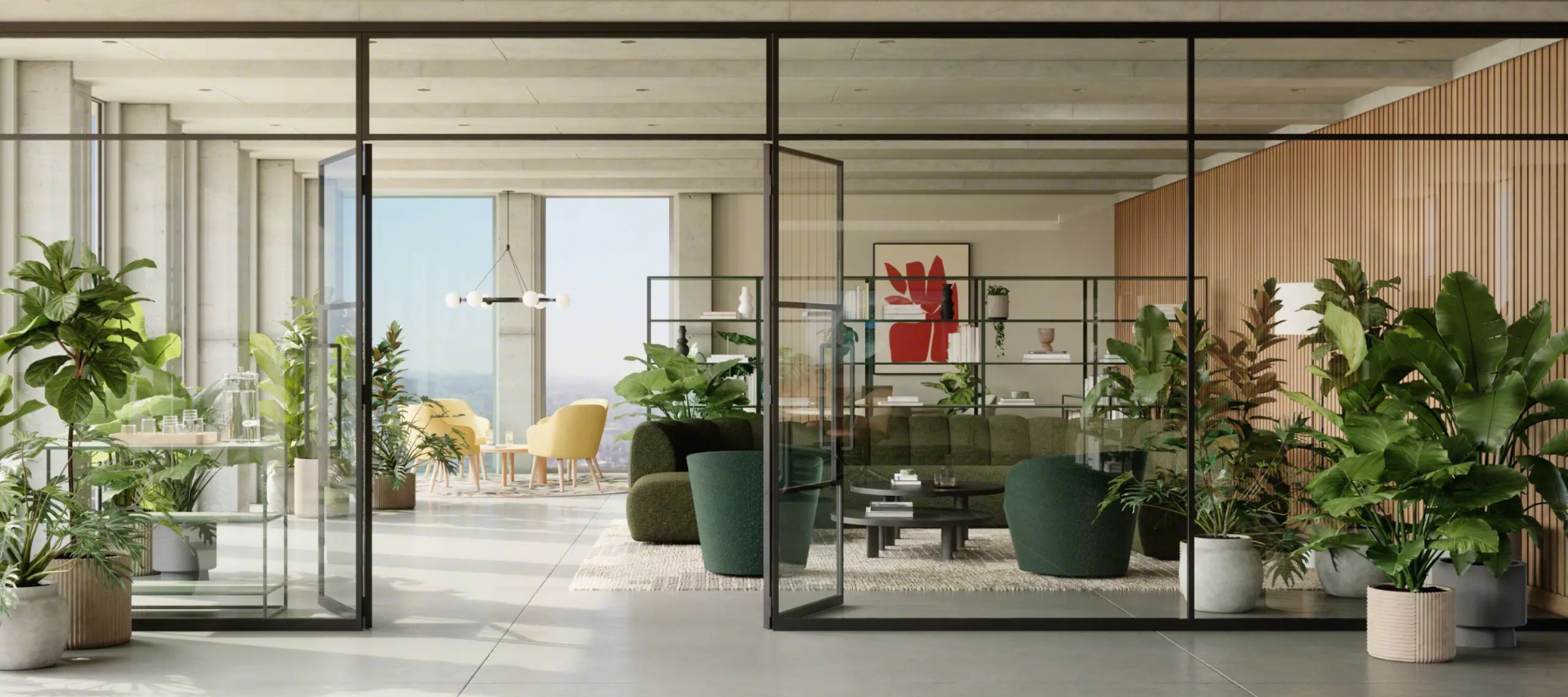Experts agree: work has changed more dramatically in the past five years than it has in generations. Leaders today are struggling to determine which model of hybrid work is best for their organizations, and employees are struggling to engage and collaborate while working and communicating primarily through technology.
Steelcase researchers have identified four overarching, macro-level shifts that are fundamentally changing the world of work, and will likely continue to do so for years to come. Some of these shifts have been building for some time, while others seemed to have popped up suddenly. By understanding how these shifts change our behaviour, we can create more resilient workplaces that build community and help people work and feel better.
In honour of that goal, Heritage Office recently hosted an information session with our partner Steelcase, where we polled professionals in the architecture and design community on how these four macro shifts would impact workplace design in the future. We are pleased to share the results of that ‘real-time research’ with you now.
Living on Screen

According to Steelcase research, people now spend more time in virtual collaboration sessions than fully face-to-face interactions. Collaboration platforms, such as Microsoft Teams, enable remote and hybrid work, which has led many leaders to question the right balance for their organizations. Steelcase research has also shown that even when people are in person in the office, they most often choose to take meetings at their desks virtually, rather than going to a hybrid-collaboration-enabled meeting room, choosing convenience over connection.
When polled on the state of hybrid collaboration in the workplace, almost all our respondents’ identified challenges with the model: keeping remote participants engaged, providing equitable experiences and a decrease in company culture were all concerns. Suggested solutions included providing more technologically advanced meeting rooms, increasing the reliability of that technology, and improving acoustic design in the open office. When collaborating in a hybrid environment, communication must be more deliberate, and a level of trust must be maintained between remote and in-person participants.
AI Supercycle

Whether you’re ready or not, AI is here. Many employees are already utilizing AI-based platforms like ChatGPT to save time, and leaders are paying attention. AI promises the opportunity for organizations to enhance accessibility, boost creativity and create more dynamic workplaces. Designing an AI-ready workplace puts people in the best position to take advantage of this supercycle. Steelcase designers are currently exploring new types of immersive spaces that can improve all types of collaboration, including working with AI. Immersive spaces have the potential to provide users with a more realistic experience, while supporting the generation and manipulation of digital information and large-scale data visualization.
But we aren’t on the holodeck yet. When asked about how AI may impact the design of the workplace, our real-time research responses were overall cautiously optimistic, with many people agreeing that AI has the potential to make us more efficient, freeing up more time for creative tasks, while letting AI assistants handle more administrative and repetitive work. Many agreed that AI would likely help clients design in real-time, though some feared this could lead to less custom designs with less creativity and innovation.
One thing is certain: the rise of AI seems inevitable, and while we may not know exactly what is coming, we all need to be prepared.
Sustainability Mindset

Sustainability has become much more than a corporate buzzword in recent years, and all signs point to companies placing an even greater emphasis on sustainability moving forward. The workplace can help organizations achieve their sustainability goals by designing to reflect sustainable choices, bringing a wider range of people together to tackle new, complex challenges. Leaders are now finding that they need to expand learning and engage all functions across their organization to reach their goals, focusing on building culture that emphasizes sustainable action and involves everyone to contribute to these goals.
When polled, respondents emphasized that this sustainability mindset will affect everything from square footage of office space to encouraging more sustainable purchasing by facilities departments. Designing for adaptability and longevity was mentioned as key to supporting sustainability initiatives, as was an emphasis on buying local.
Wellbeing Urgency

When it comes to addressing wellness in the workplace, respondents mentioned the importance of connection, flexibility and work-life balance. Education about issues of wellbeing was also recognized as something increasingly required in the workplace, particularly on the inclusion of neurodiverse individuals and how to design spaces that cause people to feel safe and supported.
Though many concede that hybrid collaboration is difficult, respondents recognized the importance of offering this kind of flexibility to employees, to allow them to choose to work in places where they feel comfortable and productive. In the office, this means providing a variety of spaces, from open collaboration areas to enclosed focus spaces, thoughtful acoustic design, as well as incorporating ergonomic workstations for physical wellness and biophilic elements for emotional wellbeing.
What’s Next for the Workplace?
The workplace is undergoing a profound transformation, shaped by the evolving dynamics of hybrid work, the rapid integration of AI, an increasing focus on sustainability, and an urgency to prioritize wellbeing. These shifts present both challenges and opportunities, demanding thoughtful solutions that balance technology with human needs, innovation with authenticity, and flexibility with connection. As we navigate this new era, the importance of designing workplaces that foster collaboration, trust, and creativity while addressing the diverse needs of employees is essential. By embracing these macro shifts and staying adaptable, organizations can create resilient, inclusive, and inspiring environments that empower their people to thrive.
Steelcase research explores the four macro shifts impacting the workplace in 2025. If you haven’t obtained your copy of the new Work Better Magazine by Steelcase, download your copy here.
Our team of experienced workplace consultants are ready to help you navigate the future of work. Contact us today to learn more about Community Based Design and how it can help create dynamic and inclusive workplaces for your organization.
